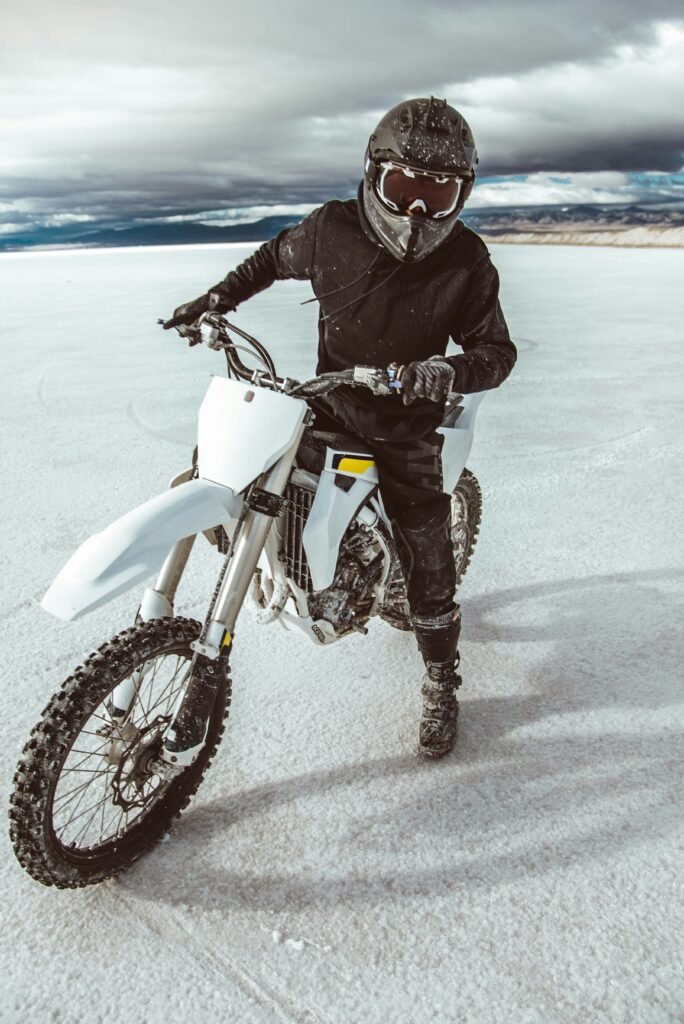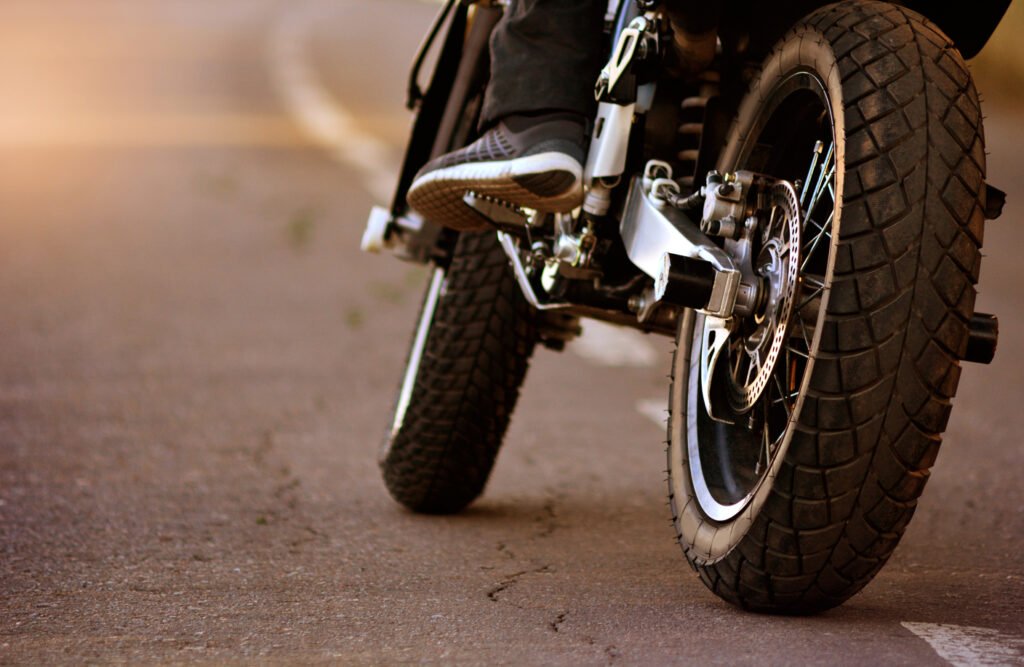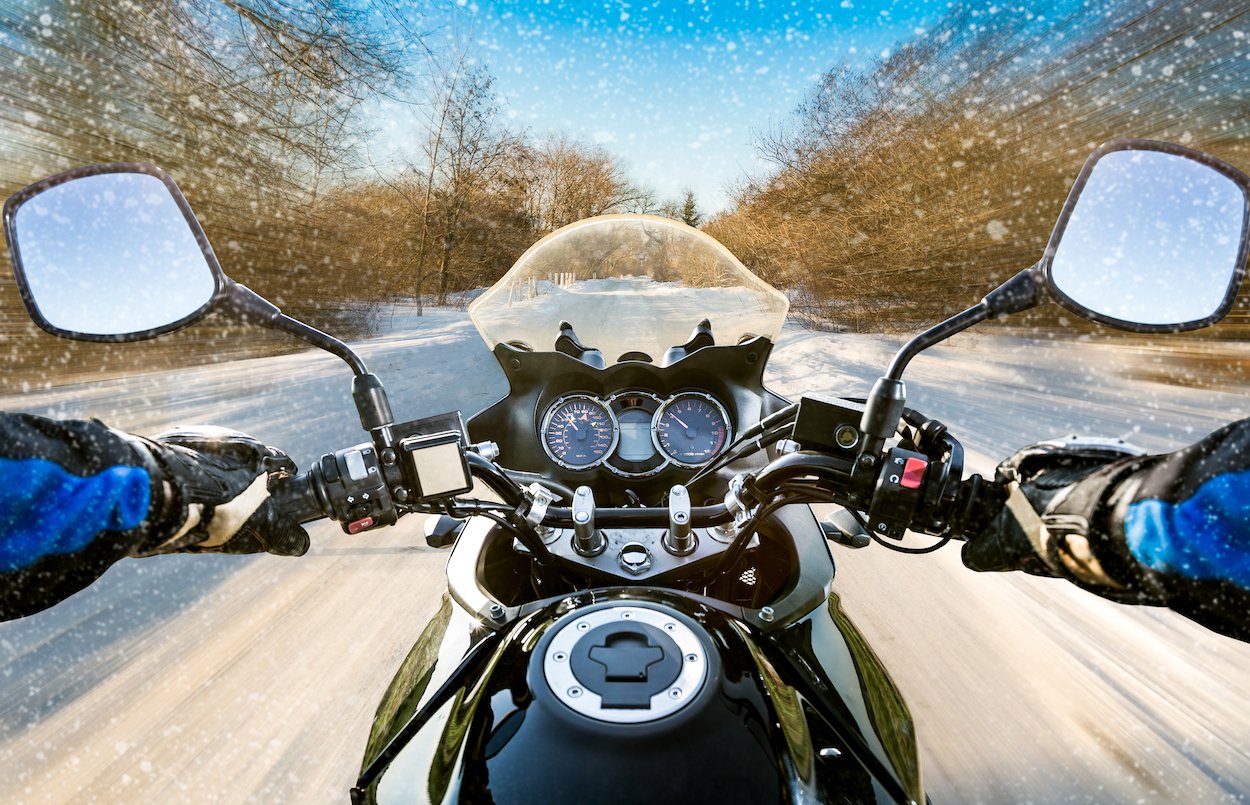As winter approaches, many motorcycle enthusiasts prepare to store their bikes away for the season, securing them in garages or under weatherproof covers and connecting trickle chargers to maintain battery health. However, for the dedicated few who brave the chill and continue riding year-round, understanding how to properly dress and prepare for cold weather is essential to ensure both safety and comfort.
Can You Ride a Motorcycle in Winter?
If you live in northern regions, you may find yourself looking out at snow-covered roads or icy conditions and wondering if winter riding is even possible. While severe snow or icy conditions require specialized equipment and skills, this article focuses on those who face primarily cold weather, occasional sleet, and clear roads. For conditions involving heavy snow or ice, specific tires and bikes are required—a topic for another day. Here, I’ll help you manage cold weather riding with a few key considerations.
1. Invest in Cold Weather Riding Gear: Layering, Waterproofing, and Heated Options
Choosing the right gear is crucial for riding comfortably and safely in cold weather. Here’s what you need to consider:

- Layering: Start with a moisture-wicking base layer to keep sweat away from your skin. Add a mid-layer, such as a thermal shirt or lightweight fleece, for extra warmth. Finally, use a waterproof and windproof outer shell to protect against the elements. Many jackets and pants designed for cold weather come with removable thermal liners, allowing versatility in varying temperatures.
- Waterproofing: Select gear with waterproof membranes like Gore-Tex or HydraTex. These materials keep rain and snow out while allowing sweat to escape, crucial for maintaining comfort. Insulated and waterproof gloves and boots are essential to protect your extremities. Choose gloves that keep your hands warm without compromising your ability to control the motorcycle.
- Neck and Visor Protection: A neck gaiter can help retain body heat, as the carotid arteries in your neck are close to the surface and crucial for warmth. A fog-free visor is also essential for maintaining clear vision. Many helmets feature anti-fog coatings or Pinlock systems to prevent fogging, ensuring a clear view of the road.
- Heated Gear: While heated gear offers extra comfort, remember that electrical components can fail. Layering remains the most reliable method of staying warm. Combining a wicking base layer, a mid-layer, a thermal liner, and a waterproof top layer with adjustable vents helps you manage temperature and airflow.
2. Prepare Your Motorcycle for Cold Weather: Protection, Comfort, and Maintenance
Properly preparing your motorcycle for cold weather is as important as having the right gear. Here’s what you should do:

- Protection and Comfort Enhancements: Install handguards to shield your hands from wind and cold. Consider a taller windshield for better protection from the elements. Grippier or spiked foot pegs enhance traction, and heated grips can significantly improve comfort. For long-distance riders, a heated saddle can make a big difference on multi-day trips.
- Coolant and Fluid Checks: Ensure your bike’s coolant system is well-maintained. Use fresh antifreeze and check that it’s mixed properly to prevent freezing. Regular coolant changes should be part of your cold weather prep. During the coolant change, inspect fuel and brake lines for any signs of wear. A burst hose or cracked line in freezing temperatures can cause significant problems and endanger your safety.
3. Use Cold-Weather Tires: Choosing, Warming Up, and Maintaining Proper Pressure
Cold temperatures affect tire performance, making the right tire choice essential:

- Choosing the Right Tires: Cold-weather or all-season tires are designed to perform better in low temperatures, offering improved grip on cold pavement. Summer tires can become dangerously slick in the cold, so it’s important to switch to more appropriate options. Many dual-sport or adventure bike tires already offer good performance in colder conditions.
- Warming Up Tires: Generate heat by accelerating and braking purposefully. Avoid swaying side to side in your lane, as this doesn’t effectively heat the tires. Instead, accelerate with moderate force and brake firmly but safely to warm up the tires from the inside out.
- Maintaining Proper Pressure: Cold weather can lower tire pressure, affecting traction. Regularly check your tire pressure, as it impacts your bike’s handling and safety. A properly inflated tire ensures better contact with the road and improves grip. Carry a portable pump to adjust tire pressure as needed, especially on longer rides.
4. Stay Vigilant and Scan the Road: Hazards, Surface Issues, and Bike Maintenance
Cold weather introduces additional hazards on the road:
- Scanning for Hazards: Always keep your eyes scanning the road ahead. Look out for pavement that appears “sparkling,” indicating the presence of road salt or recently disturbed ice. Glossy black patches often signify black ice or puddles of water. Be particularly cautious on less-traveled roads where these hazards are more common.
- Road Surface Issues: Cold weather can cause road surfaces to deteriorate. Tar snakes, used to seal cracks in the pavement, can become very slippery in winter conditions. Snow plows can also create hazardous road surfaces by scraping and polishing thin layers of ice.
- Bike Maintenance: Regularly clean your bike to remove road salt and prevent rust. Pay special attention to your chain, which can suffer from salt exposure. Keeping your chain well-lubricated and clean is crucial for maintaining its lifespan and performance.
5. Ride Defensively and Stay Visible: Following Distance, Lights, and Adjusting Your Riding Style
Defensive riding and visibility are crucial in cold weather:
- Increase Following Distance: Increase the distance between you and the vehicle ahead in colder conditions. This provides additional time to react to sudden stops or hazards. Consider doubling your following distance to improve safety.
- Use Lights and Reflective Gear: Riding with your lights on, even during daylight, enhances your visibility to other drivers. Wear brightly colored gear and use reflective strips to make yourself more noticeable. Avoid risky maneuvers like lane splitting or tailgating, which can be particularly dangerous in slippery conditions.
- Adjust Riding Style: In cold weather, painted lines on the road can be treacherous. Avoid sudden maneuvers and maintain a smooth riding style. Recognize and adapt to the conditions, giving yourself more time and space to respond to potential hazards.
6. Exercise Caution and Know When to Stay Home: Monitoring Weather and Avoiding Risks
Safety should always be your top priority:
- Monitor Weather Conditions: Regularly check weather forecasts and be prepared to change your plans if conditions worsen. If it starts to snow or sleet while you’re riding, find a safe place to wait or arrange for your bike to be transported home.
- Avoid Risky Situations: If conditions become too severe, it’s best to avoid riding altogether. Consider using alternative transportation if the weather is particularly bad. Always err on the side of caution to prevent accidents and ensure your safety.
7. Consider Cold-Weather Insurance and Roadside Assistance: Preparing for the Unexpected
Given the increased risks associated with winter riding:
- Insurance Options: Look into insurance policies that offer coverage for cold-weather components and increased liability. Some insurance providers offer specific riders for heated gear and additional coverage for winter conditions.
- Roadside Assistance: A roadside assistance plan that includes motorcycle recovery and repair services is invaluable. The American Motorcyclist Association provides a 52-state roadside assistance plan, which can be a lifesaver if you encounter mechanical issues or need help getting your bike home.
Ride Smart, Stay Safe, and Enjoy the Chill
Riding in cold weather can be a unique and rewarding experience, offering a different perspective on the roads you know so well. By investing in the right gear, preparing your bike, staying vigilant, and knowing your limits, you can enjoy safe and comfortable rides throughout the winter. Remember, the key to successful winter riding is preparation, caution, and adaptability.

